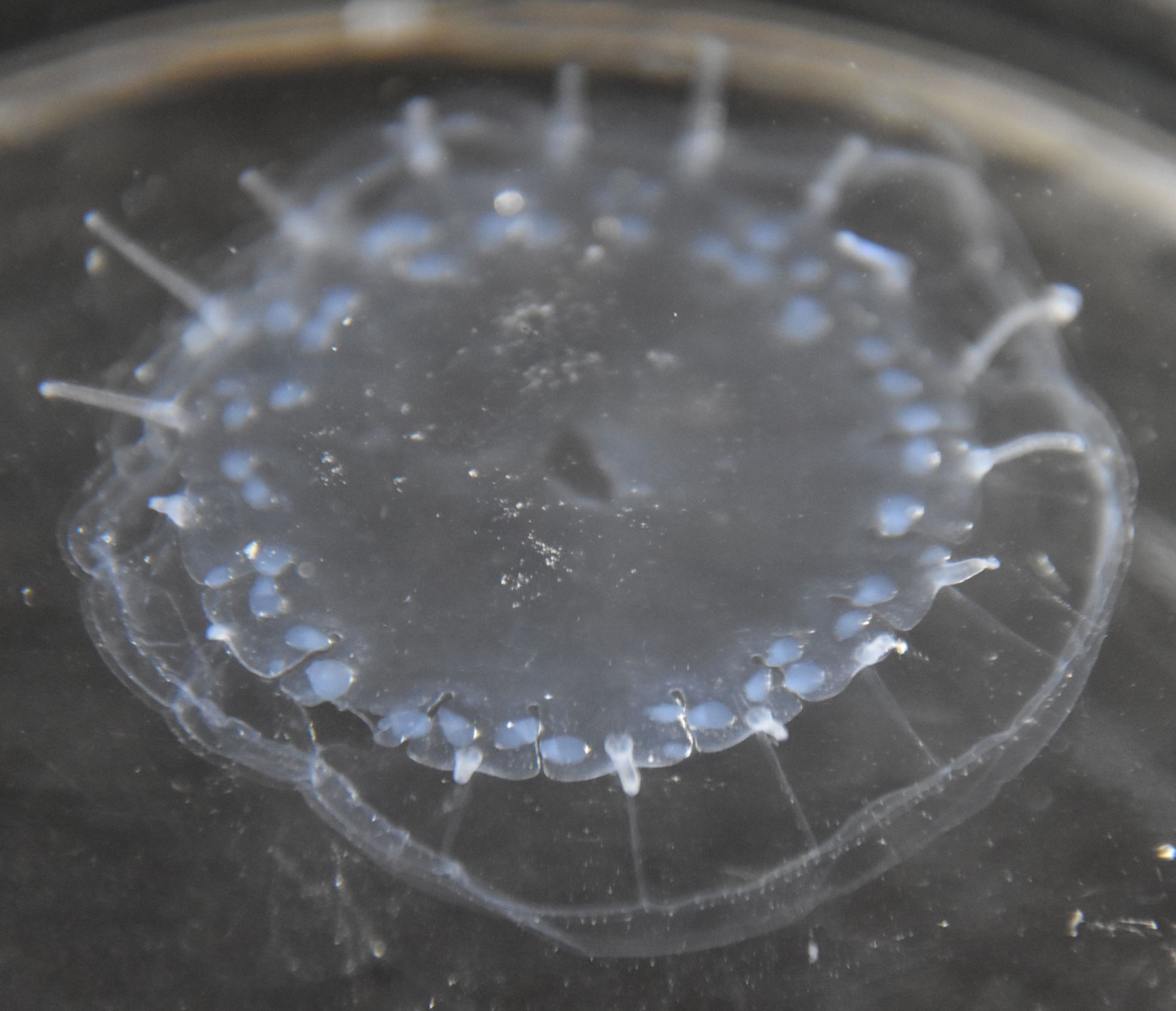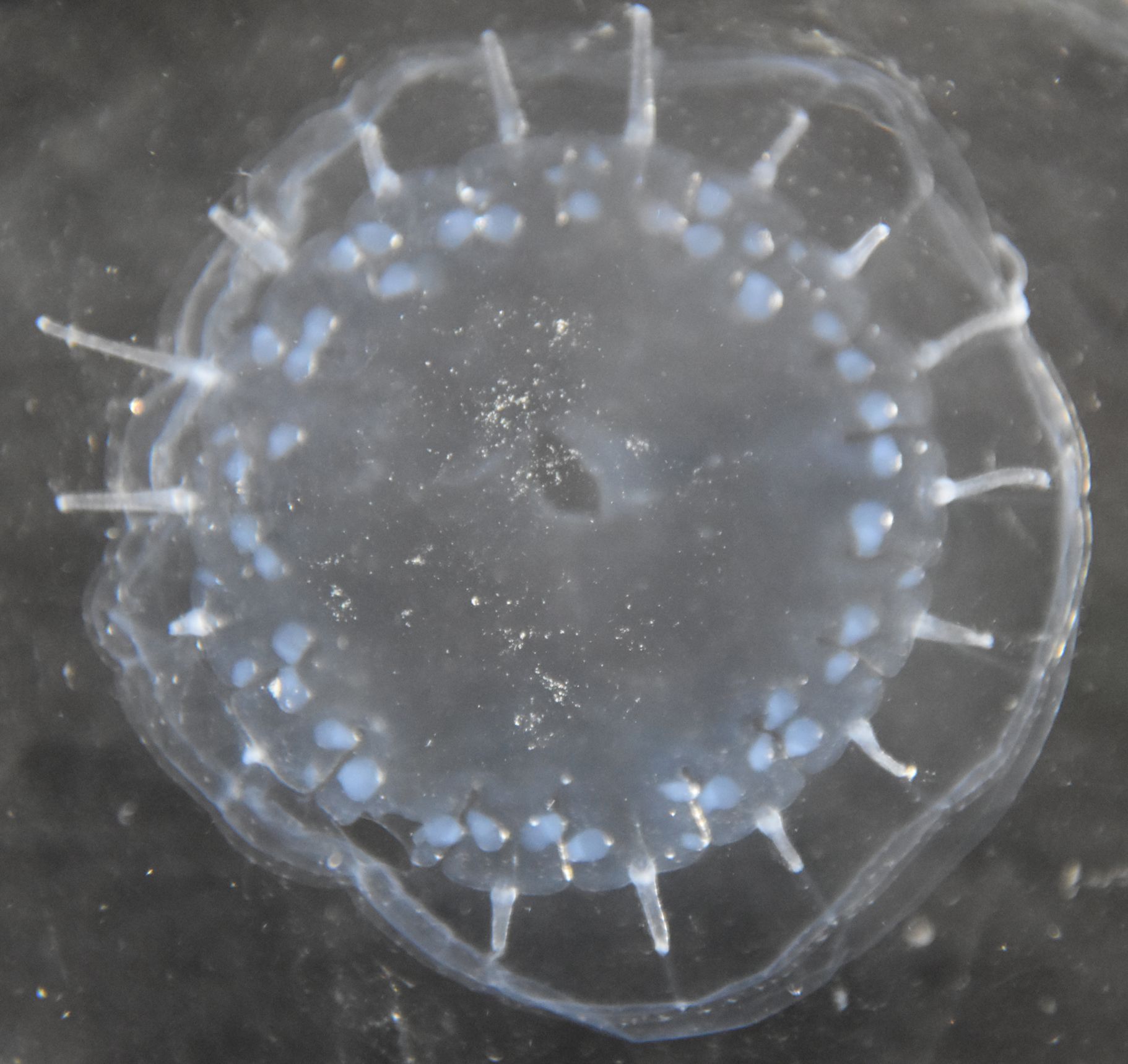Description: This species has a bell which is fairly thick in the center but has thinner side walls. It is much wider than tall, which leads to the "dinner plate" name. Unlike most hydromedusae, it has no extensive manubrium at its mouth-instead the mouth is a simple hole in the middle of the subumbrella. Instead of having radial canals, the stomach is large, extends nearly out to the tentacles, and ends with a series of oval or squared-off pouches that extend under each tentacle (photo above). Up to several gray stomatocysts may be in the area of each pocket (photo above). The ring of 8-40(usually 16) tentacles is spaced out evenly and based well up the outer surface of the bell (exumbrella). They extend upward near the base but when extended curve downward at the distal end. The species has marginal lappets near the tentacles, each of which has up to 20 sensory clubs, but has no otoporpae (bristled tracts running up the external margin of the bell). The bell diameter is up to 6 cm, and usually transparent with no color, but may have some pink or blue coloration.
How to Distinguish from Similar Species:Solmissus incisa is less common, can be larger (up to 10 cm diameter), is found more commonly offshore, and has fewer sensory clubs (2-5 per pocket). Cumina sp. has octoporpae.
Geographical Range: Worldwide in tropical and temperate oceans.
Depth Range: From the surface down to abyssalpelagic depths (at least 4000 meters)
Habitat: Pelagic
Biology/Natural
History: Members
of Order Narcomedusae lack polyps in their life cycle. Diet includes
other
medusae, ctenophores, and salps.
| Return to: | |||
| Main Page | Alphabetic Index | Systematic Index | Glossary |
References:
Dichotomous Keys:Kozloff, 1987, 1996
Carlton, 2007
General References:
Wrobel
and Mills, 1998
Scientific Articles:
Robison, B. and J. Connor, 1999. The deep sea. Monterey Bay Aquarium
Press, Monterey, CA
Web sites:
General Notes and Observations: Locations, abundances, unusual behaviors:

This oblique view clearly shows the partly-retracted tentacles attached
to the exumbrella
well above the margin of the bell.
Authors and Editors
of Page:
Dave Cowles (2025): Created original page
CSS coding for page developed by Jonathan Cowles
Salish Sea Invertebrates web site provided courtesy of Walla
Walla University
